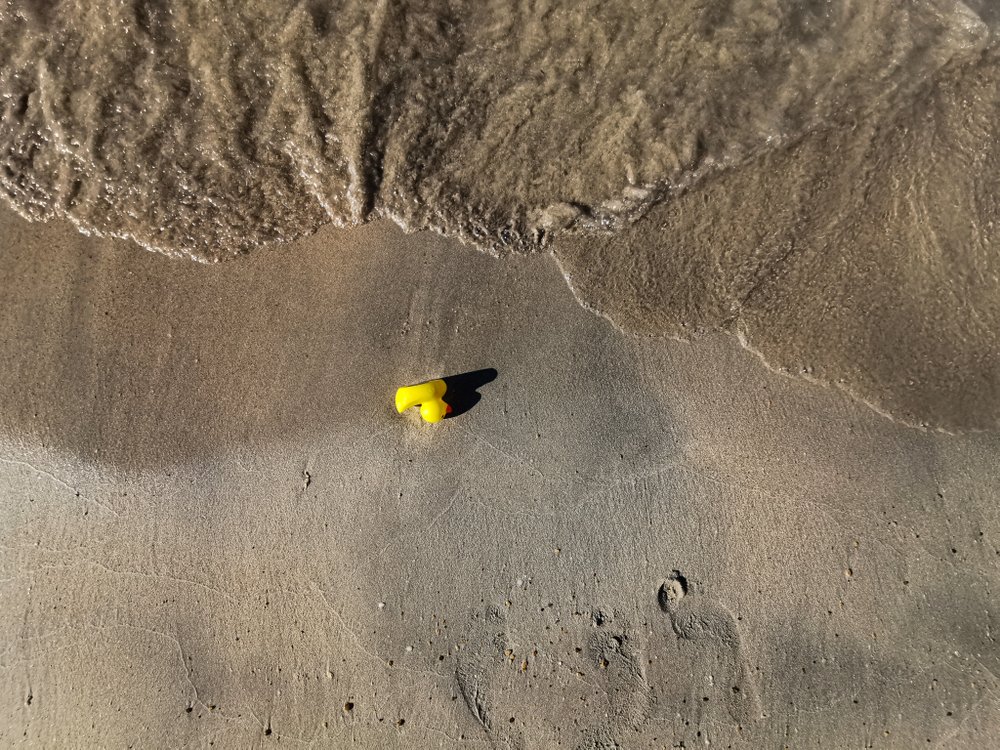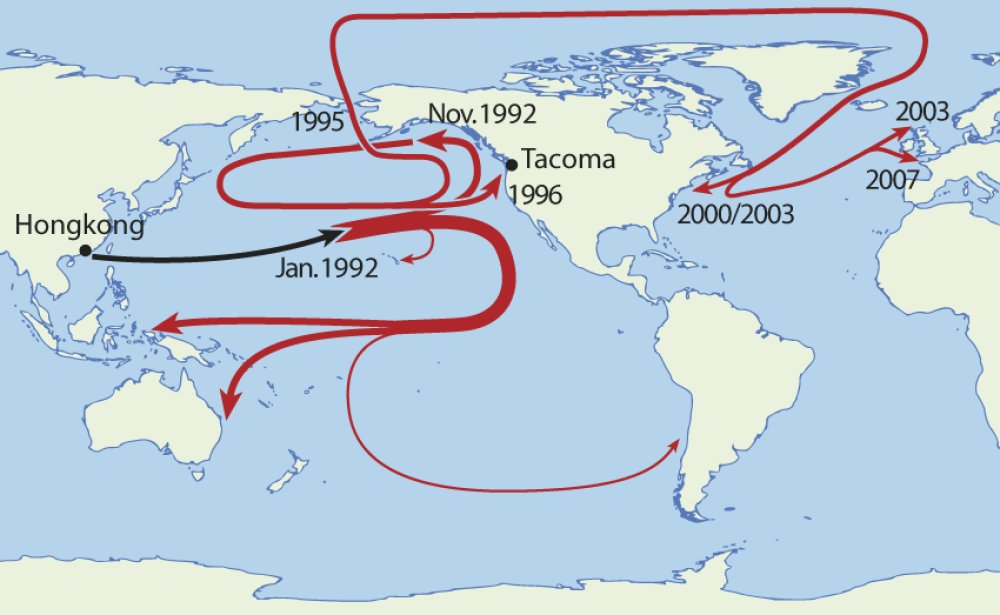It's #NationalRubberDuckyDay which is convenient because I just wrote about a fleet of 28,000 rubber ducks who accidentally became the focus of study which demonstrated how plastic pollution moves in our oceans
(Thread, sources here: https://bit.ly/3i796J4 / @IFLScience)
(Thread, sources here: https://bit.ly/3i796J4 / @IFLScience)
On January 10, 1992, a freighter in the Pacific was caught up in a storm. Waves tipped the vessel into what I like to call the Uh-Oh Zone and the manoeuvre saw several shipping containers fall into the sea, one of which contained a consignment of 28,800 bath toys.
The toys were plastic-wrapped on mounted cardboard and each contained a yellow duck, a red beaver, a green frog, and a blue turtle. The toys were designed without any holes so successfully bobbed to the surface after the waves and sea water destroyed their packaging.
Scientists could never ethically dump thousands of rubber ducks into the ocean, but the accidental release represented an opportunity too fortuitous to miss out on. Oceanographer Curtis Ebbesmeyer employed the help of beachcombers to map the progress of the bath toys' movements.
The Friendly Floatees, as they were called, first began to wash up on the Alaskan coast towards the end of 1992, approximately 3,200 kilometers (2,000 miles) from their point of origin. A year later a further 400 followed suit traveling to the eastern coast of the Gulf of Alaska.
Each reported toy was entered into OSCAR, a computer model created by Ebbesmeyer's colleague James Ingraham. The model combines data on air pressure and the speed and direction of weather systems to map the path of ocean current indicators, such as the seafaring rubber ducks.
OSCAR successfully predicted the direction of the toys, which arrived in Washington state a couple of years later. Those that remained seaworthy drifted toward Japan and back to Alaska and some even made their way to the Bering Strait where they were frozen in Arctic ice.
Ebbesmeyer estimated it would take several years for the Friendly Floatees to work their way across the Pole before the warmer climate of the Greenland Sea broke up the ice and set them free.
By 2007, a small number began washing up on the south-western shores of the UK. It’s possible that there are still Friendly Floatees at sea to this day, potentially stuck in one of the ocean’s great garbage patches or washed ashore on beaches where their significance isn't known.
The varied journeys of the bath toys taught oceanographers a lot about the connectedness of our seas. Ebbesmeyer coined the term ‘Flotsametrics” for these plastic animals, as they were a means of understanding the movements of flotsam (discarded items in the ocean).
They’ve since been replaced by drifting buoys equipped with GPS tracking devices that map the path of plastic waste. This interactive map ( http://plasticadrift.org/ ) can show the journey of trash dropped from your chosen location, which is signified (fittingly) by a rubber duck.

 Read on Twitter
Read on Twitter



